From Racine the Belle City, by Alice Sankey:
The first car to be made here to sell to the public was the Mitchell car in 1903. Henry Mitchell came to Chicago from Scotland in 1834. Not liking Chicago, he moved to Kenosha (South Port) in 1838 and started making wagons. He learned his trade in Scotland. In 1853 he sold out his business in Kenosha and came to Racine, starting the Mitchell Wagon Works the next year. He made all types of wagons, light, heavy, farm and delivery wagons. He made a heavy, strong, cross-country wagon which traveled west with many homesteaders. His trade name for his wagons was “Monarchs of the Road.” In 1864 he took his son-in-law, William Turnor Lewis, in with him under the name of H. Mitchell and Company. Its growth was steady until it became the largest of its kind in the state.
In 1896 William Turnor Lewis and his son, William Mitchell Lewis, bought out the old Beebe Wheel Works, changing the name to the Wisconsin Wheel Works and manufactured bicycles and motorcycles. They started manufacturing automobiles in 1907. Their first car was a single-cylinder horizontal motor. Then they progressed to a single cylinder air-cooled engine and in 1903 developed a small car with a two-cylinder, water-cooled engine of their own design. John W. Bate came up from Chicago and worked on the engine. The name of the concern was changed that year (1903) from the Wisconsin Wheel Works to the Mitchell Motor Car Company.
In 1904 a four-cylinder engine which John W. Bate designed was put on the market, increasing production by assembled units being put together on side lines and then assembled as a unit on the chassis, making the Mitchell Motor Car Company a pioneer in mass production. Mr. Bate seemed to be the guiding genius along the assembly line idea and William Mitchell Lewis was quick to see its advantages and appreciate its value.
The Mitchell Wagon Company and the Mitchell Motor Car Company consolidated in 1910, forming the Mitchell Lewis Motor Co. In 1911, the company employed 3,000 people, the factory covered 25 acres of land and had 60 acres of floor space. Plant No. 1 was on the south side of Packard Avenue, plant No. 2 was on Washington Avenue and Center Street. The City Hall is on part of the old Mitchell site.
William Mitchell Lewis withdrew from the concern in 1917, and it closed down in 1923.
From Wikipedia:
Mitchell-Lewis Motor Company was founded in 1900 in Racine, Wisconsin as a motorcycle maker spin-off from the wagon maker Mitchell & Lewis Company Ltd. The company began manufacturing automobiles in 1903. The wagon business and auto companies were combined into Mitchell-Lewis Motor Co. in 1910. The Mitchell car brand produced automobiles from 1903 to 1923.
Full article here: http://en.wikipedia.org/wiki/Mitchell_%28automobile%29
This 1910 Mitchell car has so many amazing features, I’d like to take one for a drive. $1,325 in 1910 dollars translates to $34,160 in 2014 dollars, so that would be somewhat above average for a new car these days. However, John Bate, the efficiency expert hired by Mitchell, was able to cut the price of the car in half. Definitely a good advertisement.
The postcard reads as follows: August 1, 1909. Racine, Wis. Dear Floyd, I hope you are all well. I am feeling fine. What do you think of the bunch on this card? We were at Silver Lake when we had it taken. Not very good, but see if you can find me. Ever your friend, G. W. D. 2022 16th St.
Lewis Miller and the Mitchell Collection; Answers about the end of the company
In June 2020, Lewis Miller shared a link in the Racine History Facebook group that I administer, and for the first time I learned about the Mitchell Collection in Missouri. It turns out that Lewis is a direct descendant of the Lewis and Miller families in Racine who were involved in Racine’s early car industries and has built an amazing car collection and website about Mitchell cars.
I had read a history of the Mitchell Motor Car Company and had run into some odd mentions about the end of the company and its bankruptcy in the 1920s. Now I had someone to ask about what was going on towards the end:
Good morning, Todd:
Thanks for sharing the Mitchell video. I’m always trying to promote my family’s history, The Racine Heritage Museum, Racine history, and Boonville, MO tourism.
To try and answer your question, there are things that I can’t put into writing. So to make a sad long story short, here goes!
My great great grandfather William Turnor Lewis passed at the end of 1915. W. T. had three children, the son being William Mitchell Lewis. He didn’t get along with the board of directors and left the company in 1913 to start his own car company. This was called the L.P.C. Motor Co. The car was called “The Lewis Six,” a fine car. The company failed and closed at the end of 1916.
Meanwhile the three children of W.T. sold out to John Deere and a New York investment firm. William Turnor Lewis,”Willie” the family called him, did not return to Mitchell Lewis Co. So with no family influence, and an investment firm that did not know how to run an automobile company, the decline started of a fine automobile plant. One factor was that “Willie” took Mitchell plant’s chief designer, a Frenchman called Rene Petard, with him to start the L.P.C. Co.
World War I had started and Rene went to Paris to see about opening a dealership there as an outlet for the Lewis VI. He was still a French citizen and was drafted into the French army as a Captain. He was badly wounded in the Battle of the Marne and never returned to America! This was the main reason for the downfall of the L.P.C. Co. The loss of Rene Petard was a serious blow to the Mitchell Co. too!
From the start of 1917, the Mitchell Lewis Co. started to decline. The investment firm started to hire and fire people to manage the plant. As some poor choices evolved through the remaining years, sales faltered. There was animosity among officers within the plant. Officers and managers were replaced frequently. Finally the investors realized that they weren’t car manufacturers and sold to Nash Motor Co.
A sad story for me. Who knows, if the family had stayed involved in the business with a good product, we might still have Mitchell cars today!
Another poor choice by W. T. Lewis was to stop manufacturing bicycles and motorcycles in 1906 and concentrate solely on the automobile! We were racing against mainly the Indian and Harley companies before 1906 and beating them on the track and out selling them in the early years before W.T. started losing interest in motorcycles in early 1905. No new upgrades were made to the 1905/06 models and then the “Wisconsin Wheel Works” part of the company was sold to Western! I would like to think that Mitchell motorcycles could still be with us today had the family kept their interest in motorcycles as well as the automobile! This is an assumption of mine if the family would have stayed involved!
I hope this helps to answer your question about leadership changes at the end.
Sincerely,
Lewis William Miller
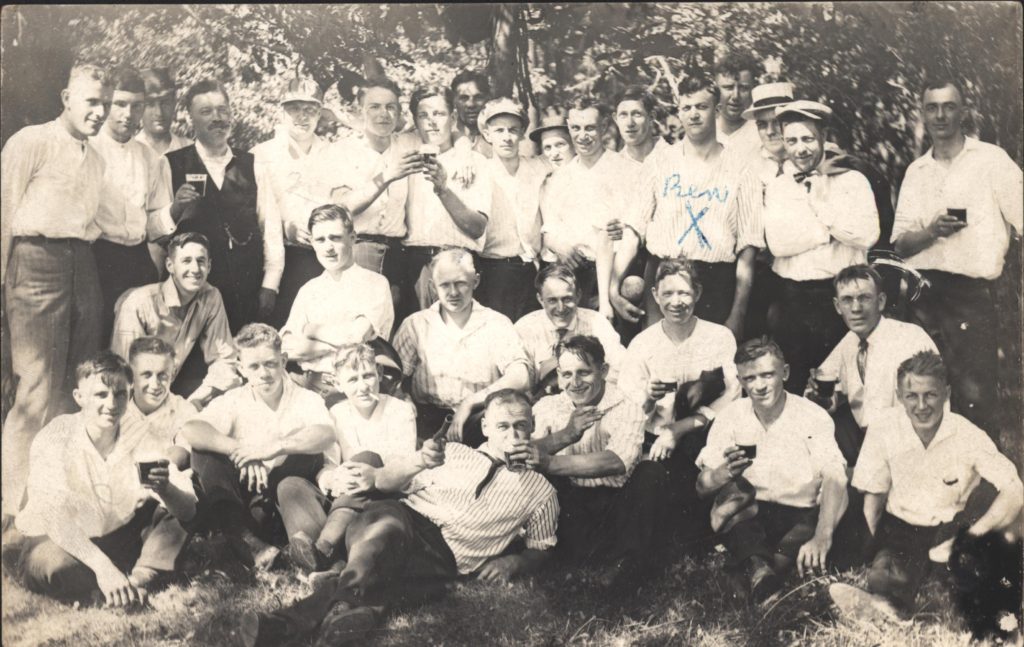
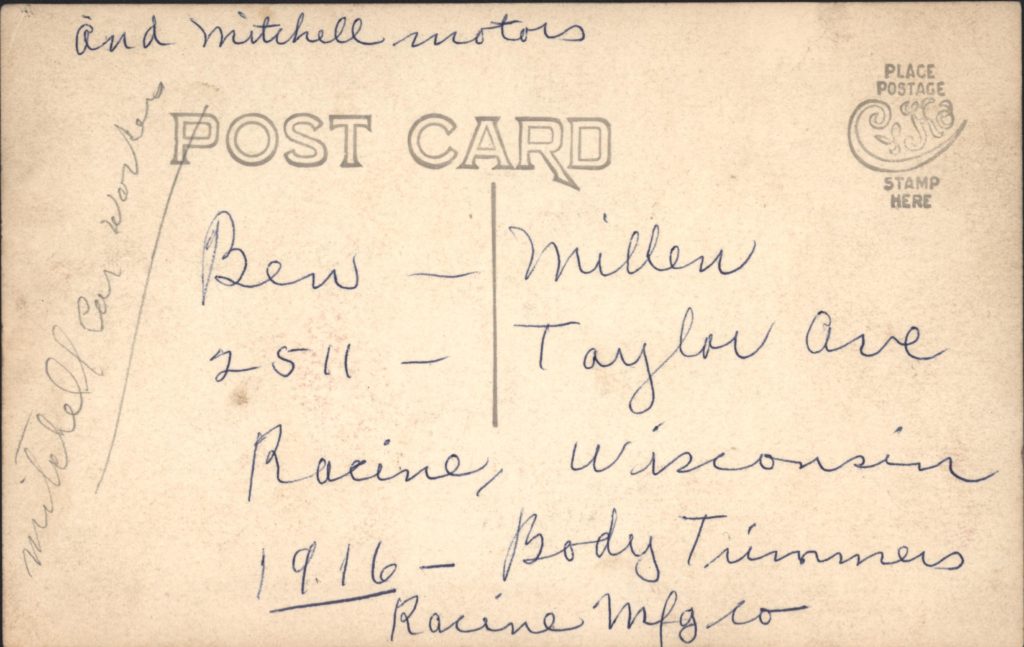
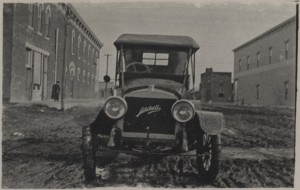
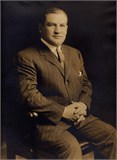
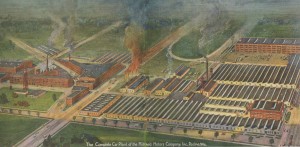
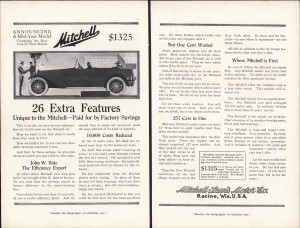
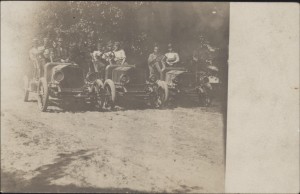
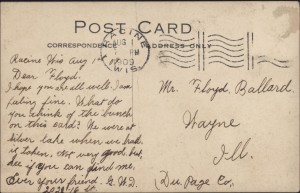

My husbands grandmother worked in the office after high school and his grandfather also worked there in the factory….that is how they met and eventually got married……
I HAVE AN OLD MITCHELL WAGON FOR PULLING KIDS AROUND. I CANT FIND ANY INFO ON IT. JUST THE CARS BUILT. ANY HELP WOULD BE GREAT. THANKS, SCOTT DAVIS RACINE
Hello Rose. Just curious are you any relation to a Steve poplawski I believe that is what is his last name was I knew Steve back in the mid to late seventies I worked with him downtown Racine
My great grandfather died at Mitchell Motor company in April 1910 during a steam pipe malfunction. Am wondering if there are any more details available on this accident?
19APR1910 Racine Journal does have an article describing an accident at the Mitchell-Lewis Motor Co. plant.
Albert Pierce was killed working on a steam boiler, when a defective valve exploded. He left a wife and two children.
My great grandfather Christian Gillis worked for them during the wagon works period, he was a chief engineer for Mr. Mitchell. When he retired Mr. Mitchell gave him a beautiful chair and money.
My Grandfather worked for Mitchell in the 1910s first working with motorized bikes, not sure how long and was a test driver that drove Mitchell vehicles to Army at Presidio, CA. He was also a chauffeur for either Mitchell or Lewis family in London.
Frances (Frank) Xavier Zirbes.
I’m looking for any history of his service that any one might have.
My mom was his daughter Florence
LOL’ing at the creative license taken on the painting of the Mitchell factory on the postcard. City Hall is on that triangular site. The Mitchell buildings to the north of where City Hall sits, the actual auto factory, were not at all that extensive, the north bounds was basically Water Street, if you go on the ground you can see the pad where the big assembly building sat, and it extended back to where the railroad tracks were. And that testing track would have been in the middle of the Root River! And wow, they make what’s currently the Wagonworks Lofts building look *huge*. I mean, yeah, it’s not a small building, but. And the factory was never in the middle of open land like the postcard shows. Racine had grown up around the old wagonworks, and it was in the middle of the city even then.
The first part abandoned was the part south of 6th St., which was sold to the city to build the “new” City Hall in 1930. Nash was only interested in the single-story auto assembly plant north of 6th St. because it was more efficient than a multi-level plant. The Great Depression took care of that one in 1938 when the machinery was removed to Kenosha in the middle of the night and the striking workers laid off, though Nash retained ownership until after WW2, using it to build aircraft parts during WW2.
The reality is that the plant was always too small to do economical mass production, which is why Nash had been building luxury cars or small-quantity specials there prior to giving up on the factory in 1938. Furthermore, unlike the Jeffery factory in Kenosha or the Lafayette Motors factory in Milwaukee both of which had been built at the edge of the city, it could not be easily expanded because it was in the middle of the city (a problem which AMC later had with the Seaman Body plant in Milwaukee that led to them converting it to just a stamping plant and doing the actual body assembly at the converted mattress factory on the Kenosha waterfront). The Jeffery plant in Kenosha was eventually expanded to almost 1.9 million square feet. The total size of the Racine auto assembly factory at its greatest extent was about 500,000 square feet — less than that of the Seaman Body plant in Milwaukee, even, which had about 1,000,000 square feet. In the end Nash didn’t need the production capacity and it was too big to repurpose for other uses the way the Lafayette plant in Milwaukee was repurposed as a centralized parts warehouse for Nash (and then AMC, and now Chrysler — it is the only remaining Nash facility from that era that has not been razed to the ground). And so they disposed of it. So it goes.
Thanks for your information! Very interesting.